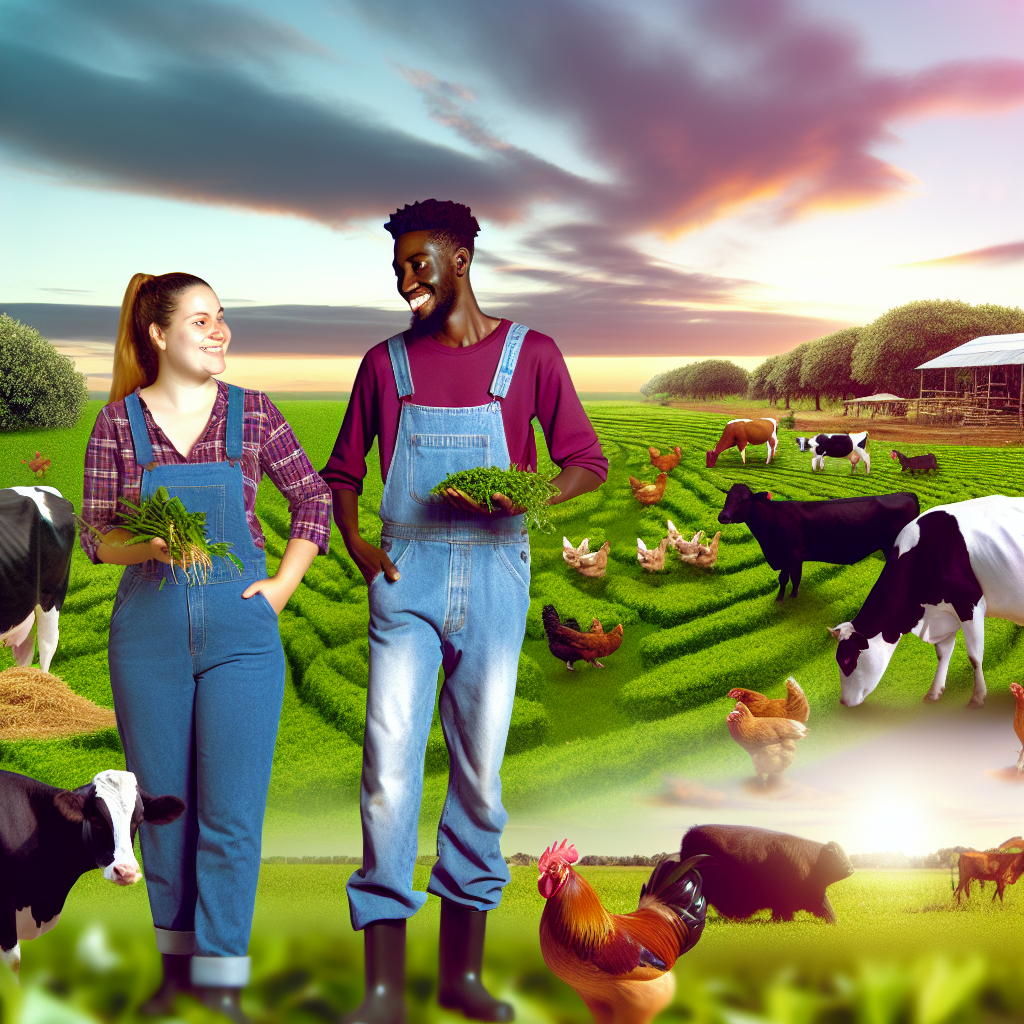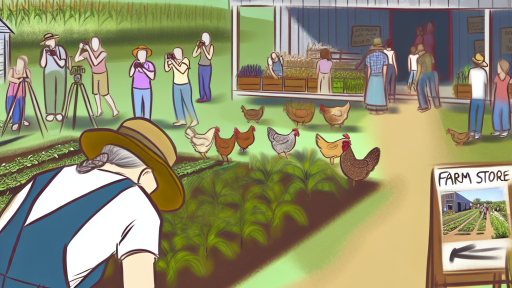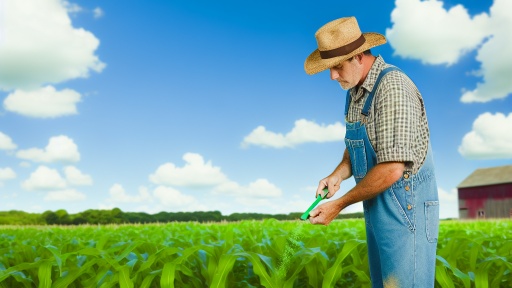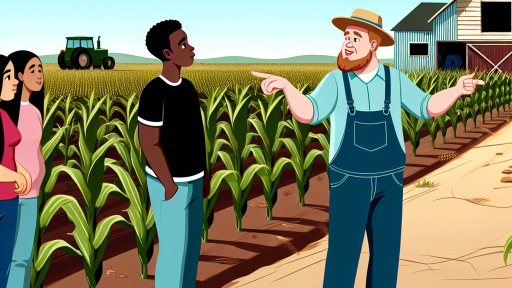Introduction to Sustainable Farming Systems
Defining Sustainable Farming
Sustainable farming focuses on meeting current food needs while preserving resources.
This approach aims to protect the environment for future generations.
It balances agricultural productivity with ecological integrity.
Principles of Sustainable Farming
Sustainable farming incorporates ecological principles.
It promotes biodiversity and enhances soil health.
This method minimizes the use of synthetic fertilizers and pesticides.
Benefits of Sustainable Farming
One significant advantage is improved resilience to climate change.
Sustainable practices reduce the reliance on non-renewable resources.
Additionally, they enhance community well-being through local food systems.
Challenges in Implementation
Transitioning to sustainable farming can present challenges.
Farmers often face economic pressures and market demands.
There is a need for education and support for successful adoption.
Integrating Livestock
Integrating livestock enhances sustainable farming systems.
Livestock contributes to nutrient cycling and soil fertility.
It also provides valuable inputs such as manure for natural fertilizer.
Transform Your Agribusiness
Unlock your farm's potential with expert advice tailored to your needs. Get actionable steps that drive real results.
Get StartedThe Role of Livestock in Sustainable Agriculture
Enhancing Soil Fertility
Livestock play a crucial role in enhancing soil fertility.
Their manure serves as a rich organic fertilizer.
This natural input boosts soil nutrients and microbial activity.
As a result, farmers can reduce reliance on chemical fertilizers.
Moreover, livestock can help maintain and improve soil structure.
Supporting Biodiversity
Integrating livestock supports a diverse farming ecosystem.
Diverse species promote pest control and pollination.
By grazing, livestock help manage pastureland effectively.
They promote the growth of native plants and grasses.
This creates habitats for beneficial insects and wildlife.
Improving Economic Viability
Livestock add economic value to sustainable farming systems.
They provide multiple income sources for farmers.
For instance, farmers can sell meat, milk, and wool.
Additionally, livestock production can lead to job creation.
Economic diversification promotes resilience in farming communities.
Water Management and Soil Conservation
Livestock contribute positively to water management practices.
Grazing animals help to reduce erosion on sloped land.
This maintains soil quality and conserves water resources.
Additionally, their natural behaviors can aid in water retention.
Properly managed grazing can rejuvenate degraded landscapes.
Benefits of Integrating Livestock with Crop Production
Enhancing Soil Fertility
Livestock contribute significantly to soil fertility through natural manure production.
This organic matter enriches the soil, improving its structure and nutrient content.
Consequently, crops receive essential nutrients, leading to better growth and yield.
Utilizing manure reduces the need for chemical fertilizers.
Showcase Your Farming Business
Publish your professional farming services profile on our blog for a one-time fee of $200 and reach a dedicated audience of farmers and agribusiness owners.
Publish Your ProfileThis approach not only cuts costs but also mitigates environmental impacts associated with synthetic fertilizers.
Promoting Biodiversity
Integrating livestock helps maintain diverse agricultural ecosystems.
Diverse farms support various plant and animal species, enhancing resilience against pests and diseases.
This biodiversity creates a balanced environment, reducing the reliance on chemical pesticides.
Furthermore, it fosters a more stable and sustainable farming system over time.
Improving Pest and Weed Management
Livestock can effectively manage pests by grazing on weeds and unwanted vegetation.
This natural control reduces the need for herbicides.
Additionally, certain livestock species act as biological control agents for specific pests.
For instance, chickens are known to eat insects and larvae, minimizing pest populations.
Enhancing Economic Viability
Integrating livestock can lead to diversified income streams for farmers.
Farmers can sell both crops and livestock products, enhancing profitability.
Moreover, livestock can convert crop residues into valuable protein sources.
This practice maximizes resource use and reduces waste on the farm.
Enabling Efficient Resource Use
Integrating livestock allows for more efficient use of land and resources.
Farmers can use crop by-products as feed for livestock.
This practice minimizes waste and creates a closed-loop system on the farm.
Additionally, livestock return nutrients back to the soil, further enhancing sustainability.
Strengthening Climate Resilience
Mixed farming systems demonstrate increased resilience to climate variations.
Livestock can help buffer crop losses during extreme weather events.
Moreover, integrating livestock allows for more sustainable water use on farms.
This strategy improves overall farm sustainability amidst changing climate conditions.
Uncover the Details: Building Brand Loyalty in Direct Farm Sales
Types of Livestock Suitable for Sustainable Farming
Small Ruminants
Small ruminants like goats and sheep thrive in diverse climates.
They graze on various vegetation, aiding in land management.
Furthermore, they provide both meat and wool for farmers.
Goats require minimal space, making them ideal for small farms.
Moreover, sheep offer excellent companionship for larger livestock.
Poultry
Poultry such as chickens and ducks are versatile livestock options.
They efficiently convert feed into protein-rich eggs and meat.
Chickens contribute to pest control in crops and gardens.
Ducks can help manage wetlands, benefiting local ecosystems.
Additionally, poultry manure serves as a valuable fertilizer.
Beef Cattle
Beef cattle play a key role in sustainable agriculture.
They provide meat while aiding in nutrient cycling through grazing.
A well-managed herd can improve pasture health over time.
Rotational grazing enhances soil structure and biodiversity.
Moreover, local breeds often adapt better to specific terrains.
Hogs
Hogs, or pigs, are intelligent and adaptable livestock.
They consume food scraps, reducing waste on farms.
Pigs also help till the soil when foraging, enhancing soil quality.
Showcase Your Farming Business
Publish your professional farming services profile on our blog for a one-time fee of $200 and reach a dedicated audience of farmers and agribusiness owners.
Publish Your ProfileFurthermore, they can be raised in various systems, from free-range to confined.
Raising hogs on pasture contributes to a sustainable farming model.
Integration of Livestock
Integrating different types of livestock can optimize farm efficiency.
For instance, chickens can forage among cattle, reducing feed costs.
This symbiotic relationship enhances nutrient cycling on the farm.
Moreover, diverse livestock promotes resilience against diseases.
Farmers can tailor integration strategies to suit their specific conditions.
Delve into the Subject: Farm-to-School Success Stories for Farmers
Best Practices for Livestock Management in Sustainable Systems
Choosing Sustainable Breeds
Select livestock breeds that are well-suited to local environmental conditions.
Consider breeds that require less feed and water.
Native breeds often have better disease resistance.
Research local breed associations for guidance.
Implementing Holistic Grazing Practices
Use rotational grazing to prevent overgrazing.
This technique helps maintain soil health and biodiversity.
Monitor pasture conditions regularly to make informed decisions.
Integrate diverse species to maximize the benefits of grazing.
Ensuring Proper Nutrition
Provide a balanced diet tailored to livestock needs.
Utilize locally sourced feed to reduce carbon footprints.
Incorporate forage crops to enhance nutritional intake.
Consider supplements only when necessary for health.
Practicing Animal Welfare
Ensure animals have adequate space and shelter.
Implement regular health checks and vaccinations.
Provide opportunities for natural behaviors and social interactions.
Educate staff on animal welfare standards and practices.
Utilizing Integrated Pest Management
Prevent infestations by maintaining clean living environments.
Incorporate biological control methods when possible.
Use pesticides as a last resort, focusing on targeted solutions.
Train staff on pest identification and management techniques.
Monitoring Environmental Impact
Keep track of the farm’s water usage and waste management.
Implement practices to reduce greenhouse gas emissions.
Evaluate the effectiveness of resource use periodically.
Continuously seek innovative solutions to enhance sustainability.
Engaging with the Community
Educate the local community about sustainable practices.
Participate in local farmers’ markets to share produce.
Collaborate with local organizations to support sustainability initiatives.
Gather feedback from consumers to improve practices.
Discover More: Promoting Your Farm with Local Food Sourcing

Case Studies: Successful Integration of Livestock in Farms
Complementary Roles of Livestock and Crops
Integrating livestock with crops enhances farm productivity.
For instance, rotational grazing benefits pasture health.
Additionally, manure from livestock enriches soil fertility.
Showcase Your Farming Business
Publish your professional farming services profile on our blog for a one-time fee of $200 and reach a dedicated audience of farmers and agribusiness owners.
Publish Your ProfileFarmers like Sarah Thompson successfully combine these practices.
Her farm thrives with crop diversity and healthy livestock.
Improved Resource Management
Effective resource management is crucial for sustainability.
Case studies show that livestock can reduce waste.
For example, surplus feed becomes livestock feed.
This practice minimizes costs and maximizes utility.
Farmers also report savings in fertilizer expenses.
Enhancing Biodiversity
Livestock integration promotes biodiversity on farms.
It creates habitats for various species, fostering ecological balance.
Moreover, biodiversity improves resilience against pests and diseases.
A farm run by Tom Rodriguez demonstrates these benefits.
He maintains diverse cattle and poultry alongside crops.
Adapting to Local Conditions
Farmers must tailor livestock integration to their local environments.
Studying local climate and soil types aids effective planning.
For instance, John Lee adapted his grazing strategy to arid conditions.
As a result, his livestock remains healthy and productive.
His approach illustrates the importance of flexibility in practices.
Community Impact
Integrating livestock not only benefits individual farms but communities.
Local economies thrive on diverse agricultural products.
Farmers also support local markets by selling fresh produce.
An example is the cooperative formed by farmers in Rivertown.
Their collaboration enhances overall farm viability.
See Related Content: Building Trust With Ethical Farming
Challenges and Solutions in Livestock Integration
Understanding the Challenges
Integrating livestock into sustainable farming poses numerous challenges.
Livestock can contribute to overgrazing if not managed properly.
This leads to soil degradation and reduced plant biodiversity.
Additionally, predators and diseases can affect livestock health.
Farmers may face economic pressures when managing livestock costs.
Moreover, conflicting farming practices can arise among stakeholders.
Farmers often struggle to reconcile livestock grazing with crop production.
Addressing Nutrient Management
One major challenge is managing the nutrient cycle effectively.
Lack of nutrient recycling can lead to soil nutrient depletion.
To address this, farmers can utilize manure as a natural fertilizer.
This practice enriches the soil and improves crop yield.
Furthermore, incorporating legumes can enhance soil nitrogen levels.
Regular soil testing also helps farmers identify nutrient needs.
Implementing Sustainable Grazing Practices
Sustainable grazing practices are essential for livestock health.
Rotational grazing prevents overgrazing by allowing pasture recovery.
Farmers can also establish designated grazing areas to limit impact.
This method promotes better grass health and reduces erosion.
Showcase Your Farming Business
Publish your professional farming services profile on our blog for a one-time fee of $200 and reach a dedicated audience of farmers and agribusiness owners.
Publish Your ProfileIncorporating cover crops can enhance soil quality during off-seasons.
Moreover, using technology can help monitor pasture conditions effectively.
Enhancing Animal Welfare
Animal welfare concerns are pivotal in livestock integration.
Intensive farming methods can compromise animal well-being.
To improve conditions, farmers can transition to free-range systems.
This approach allows livestock to exhibit natural behaviors.
Additionally, proper veterinary care ensures healthier animals.
Investing in education about animal husbandry further benefits farmers.
Building a Supportive Community
A supportive community fosters sustainable livestock integration.
Collaboration among local farmers can share best practices.
Farmers’ markets can also create direct sales opportunities.
This approach strengthens community ties and benefits local economies.
Engaging with agricultural extension services provides valuable resources.
Additionally, ongoing training sessions can empower farmers with knowledge.
Leveraging Technology for Improvement
Technology can play a crucial role in improving livestock management.
Data collection tools help track animal health and productivity.
Automated feeding systems can optimize feed efficiency.
Furthermore, mobile apps can provide farmers with timely information.
These technological advancements enhance decision-making processes.
Ultimately, they contribute to a more sustainable livestock system.
Future Trends in Sustainable Farming with Livestock
Emphasis on Regenerative Practices
Farmers increasingly adopt regenerative practices to enhance soil health.
This approach focuses on restoring ecosystems through livestock integration.
Moreover, it encourages biodiversity and improves water retention.
Ultimately, regenerative techniques will become standard in sustainable farming.
Innovative Technology in Livestock Management
Advancements in technology revolutionize livestock management.
Farmers now use precision farming tools for better resource management.
For instance, drones help monitor pasture conditions and animal health.
Additionally, data analytics improves decision-making processes on farms.
Holistic Animal Welfare Practices
Animal welfare is gaining more attention among consumers and farmers.
Ethical treatment of livestock supports sustainable farming systems.
Farmers are implementing practices that prioritize the health of animals.
In turn, this focus enhances productivity and product quality.
Community-Based Farming Initiatives
Community-supported agriculture (CSA) programs strengthen local economies.
These initiatives promote direct connections between farmers and consumers.
Livestock integration within CSAs provides fresh, sustainable meat options.
Furthermore, these systems help educate the public on sustainable practices.
Shift Towards Sustainable Protein Sources
Consumers are increasingly seeking sustainable protein sources.
Alternative proteins, such as cultured meat and insects, gain popularity.
This shift leads farmers to explore diverse livestock options.
By diversifying production, they can meet changing consumer preferences.
Showcase Your Farming Business
Publish your professional farming services profile on our blog for a one-time fee of $200 and reach a dedicated audience of farmers and agribusiness owners.
Publish Your ProfileAdditional Resources
Integrating Livestock and Crops: Improving Soil, Solving Problems …
Local Food Systems: Concepts, Impacts, and Issues, ERR 97, US …




